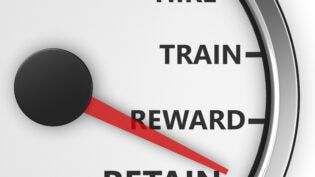3 Key Elements of a Strong Change Management Framework
By: Bill Hogg

Realizing a need for change and having a plan to stimulate change are very different. Making any type of change to the status quo is never easy—it’s even more difficult without a clear change management plan to help guide your organization through the disruption, chaos and unfamiliar territory that is brought on by change.
As I have stated previously in Building Your Change Management Plan, “A change management plan creates a structure and strategy for a leader’s vision of change to achieve their desired outcome. It also ensures that the transition is intentional and doesn’t leave out critical steps or elements in achieving lasting change.”
Generally speaking, there are three main phases of leading change that you need to work through:
- Identify the need for change
- Guide the organization through the transition period
- Reinforce and sustain change once it is implemented
To ensure you move through these phases as smoothly as possible, the final piece of the process to creating real change is to establish a change management framework. This framework is made up of rational, emotional, and process driven elements that you can use to manage change and your organization’s transition.
There are many well-recognized change frameworks available, but the key is to have the emotional part of the change process intentionally built into the process. That element is not always clearly evident in some frameworks.
Send me an email if you would like a copy of my Organizational Transformation Framework to help you identify which areas of your organization could benefit from some attention.
3 Key Elements of a Strong Change Management Framework
Effective change management frameworks not only address how the change process will occur, they also address the rational, emotional, and process driven elements that need to be in place for real sustainable change to occur:
Rational Elements
From a rational perspective, the framework should establish methods for measuring services, processes, standards, learning and development, and use balanced scorecards and other metrics to quantify results and reinforce expectations. These elements help create a high-performance culture.
Emotional Elements
From an emotional perspective, the framework should establish purpose, service principles, how to recognize performance, employee engagement, and set communication standards. It is essential to engage people emotionally. Like any model, it is flexible, based on the needs of the organization.
Process Driven Elements
Good process is transparent, creates focus, demonstrates your commitment and embeds accountability, which drives the emotional component so critical for success. Any change initiative will lead to necessary changes in processes currently underway to fine-tune, create efficiencies or increase customer focus. The change management framework provides leaders with a structure that will guide you throughout the change process to achieve your desired outcomes.
Finally, the need for accountability is paramount to a successful change initiative—and that requires a strong, transparent process. Guide the change process with a no excuses approach that is rooted in accountability (see Having a Clear Change Process: The 3 Elements of a No Excuses Mindset).
While difficult, change is foundational to an improvement in performance, profits, and results. To succeed, it is essential to stir emotions strongly enough to overcome the natural tendency to slide back into the comfort of old habits. Purpose, passion, and process are the key elements to get your organization fired up and focused on creating real change. When leaders understand the rational and emotional components of change and how to clearly communicate the 3P Change Equation, they will be in a position to achieve desired outcomes.












